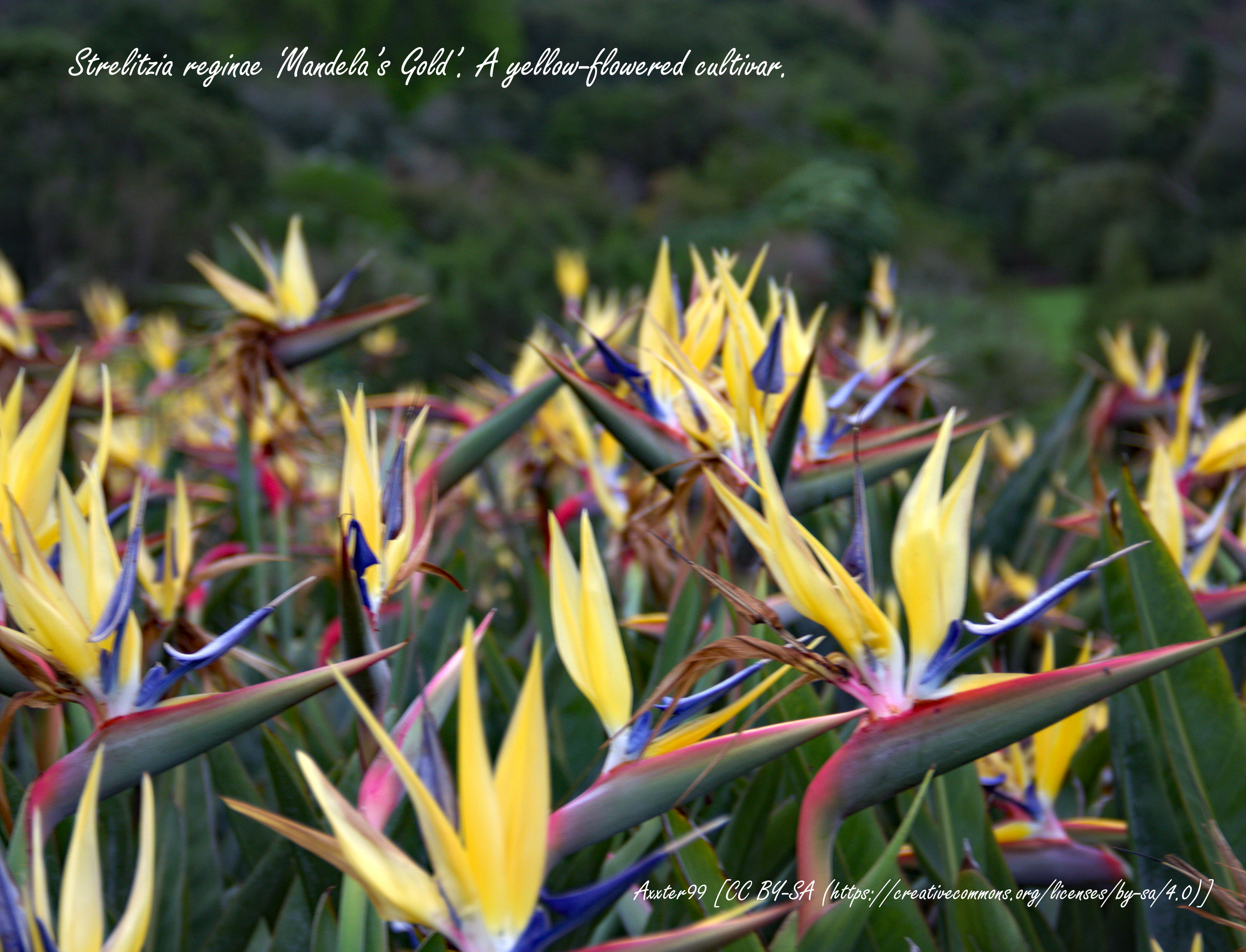Plants in Pots: Strelitzia reginae
I read that that big and bold houseplants will be the trend for 2020 in the UK. If you are looking for a large striking feature plant, Strelitzia reginae may be the one for you.
Strelitzia is a South African plant whose flowers resemble the head of a very colourful and flamboyant bird of paradise. For this reason, it is commonly called the Bird of Paradise Plant, Crane Plant of Crane Lily.
It is a stemless, evergreen, clump-forming perennial plant with large grey-green leaves. It’s natural habitat is along the eastern coast from Humansdorp to northern KwaZulu-Natal, where it generally grows along river banks in full sun, but may also grow and flower on the margins of the forest in shade.
Strelitzia was first grown in the UK in 1773 at the Royal Botanical Gardens in Kew, Surrey. Today, it can now be found in many countries the world over, growing particularly well in areas with warm climates, such as Florida and Southern California in the United States. Strelitzia is the Official Flower of the city of Los Angeles.
There are five different species of Strelitzia, each with different characteristics such as colour of flower, height attained and shape and size of leaf. The two most popular species are Strelitzia reginae and Strelitzia nicolai, which are normally grown as houseplants or in conservatories in colder climates.
I have two Strelitzia reginae plants in pots. Strelitzia reginae can grow to a height of 1.5m, but can attain a greater overall height when in bloom. The flowers are bright orange, purple-blue, green and red in colour, quite stiff to the touch, and last for weeks before fading. Absolutely beautiful! In their natural habitat, flowers appear in May and December. Spring and winter in the UK.
There is a cultivar of Strelitzia reginae called ‘Mandela’s Gold’ in which the orange parts of the flower are replaced with yellow. The picture at the top of this page is of a sea of ‘Mandela’s Gold’ plants in flower in their natural habitat, South Africa.
I used to grow my orange-flowered Strelitzia reginae in large pots in my living room. Sitting on my sofa, I’d be transported to the tropics when they were in full bloom, with the sun shining in from blue skies through a nearby picture window. Bliss!
Here they are in the picture below.
Traditionally, Strelitzia seeds are used in the Cape region to sour milk. There is also a clan in KwaZulu-Natal who use the strained decoctions from the inflorescence to treat inflamed glands and certain venereal diseases. I just love to look at them!
According to the Royal Horticultural Society (RHS), Strelitzia reginae may be kept outside in summer in the UK, either in their pots or planted in well-drained soil. Ideally, they should not be exposed to temperatures lower than 12C (50-54F) so they are best brought into a conservatory or the home for the cold winter months. Frost is a big no-no.
You have to be careful if you decide to keep your Strelitzia reginae indoors in the UK. They like it humid and can suffer terribly in dry home environments with central heating and fires etc. For this reason, the RHS advice is to keep the plant in a conservatory. My plants were fine in my living room for 2 years. I never used the central heating in the living room and corridor near the plants anyway. I’m naturally quite cold tolerant and prefer my home environment to be on the cooler side so I didn’t have a problem with opening windows to ventilate the house in winter (letting some moist air in), and only using heating appliances sparingly.
I moved house two years ago and unfortunately there is simply ‘no room in the inn’ for my Strelitzias at home now. I don’t have a garden or a conservatory. My Strelitzias have had to go to the allotment. This is their second winter there now. They survived the winter of 2018 (the leaves did look a bit worse for wear) and flowered beautifully, but only ONCE, in the summer, in 2019. They’re currently wrapped in frost jackets, in the warmest spot I could find. One was exposed to the elements for a time after Storm Ciara blew the frost jacket off a few days ago. I’ve recovered it and hope it will be OK.
I’ll keep my fingers tightly crossed for the 2020 flowering season(s).






